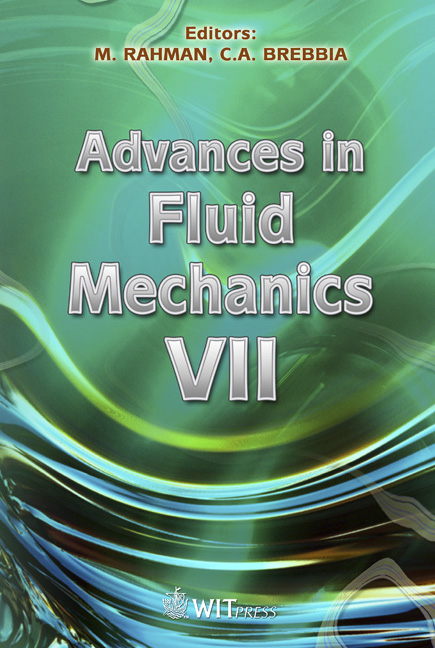A Mathematical And Numerical Study Of Roll Waves
Price
Free (open access)
Transaction
Volume
59
Pages
10
Published
2008
Size
309 kb
Paper DOI
10.2495/AFM080451
Copyright
WIT Press
Author(s)
S. J. D. D’Alessio & J. P. Pascal
Abstract
A mathematical and numerical study of roll waves S. J. D. D’Alessio1 & J. P. Pascal2 1Department of Applied Mathematics, University of Waterloo, Canada 2Department of Mathematics, Ryerson University, Canada Abstract In this paper we analyze the gravity-driven laminar flow of a shallow fluid layer down an uneven incline with the principal objective of investigating the effect of bottom topography on the instability of the flow. The equations of motion are approximations to the Navier-Stokes equations which exploit the assumed relative shallowness of the fluid layer and fast laminar flow. The explicit dependence on the cross-stream coordinate is eliminated by depth-integrating the equations of motion. A linear stability analysis of the steady flow is carried out by taking advantage of Floquet-Bloch theory. A numerical scheme is devised for solving the nonlinear governing equations and is used to calculate the evolution of the perturbed steady flow. The results are used to confirm the analytical predictions and to investigate the structure of roll waves. The effect of bottom topography for cases where the bottom profile corresponds to periodic undulations is discussed. Keywords: roll waves, bottom topography, linear stability analysis, nonhydrostatic pressure, integral-boundary-layer equations. 1 Introduction The instability of a free-surface gravity-driven flow down an incline leads to the formation of a wave pattern consisting of a series of rapid surface variations followed by slowly varying sections. This phenomenon is referred to as roll waves and occurs in many artificial and natural settings [1]. The formation of roll waves can have devastating consequences. For example, in mud flows they can have suf- ficient force to cause serious property damage while in open conduits they can damage flow-rate measuring devices. The potential impact of roll waves can be reduced, or even eliminated, by appealing to theoretical predictions.Mathematical
Keywords
roll waves, bottom topography, linear stability analysis, nonhydrostatic pressure, integral-boundary-layer equations.





